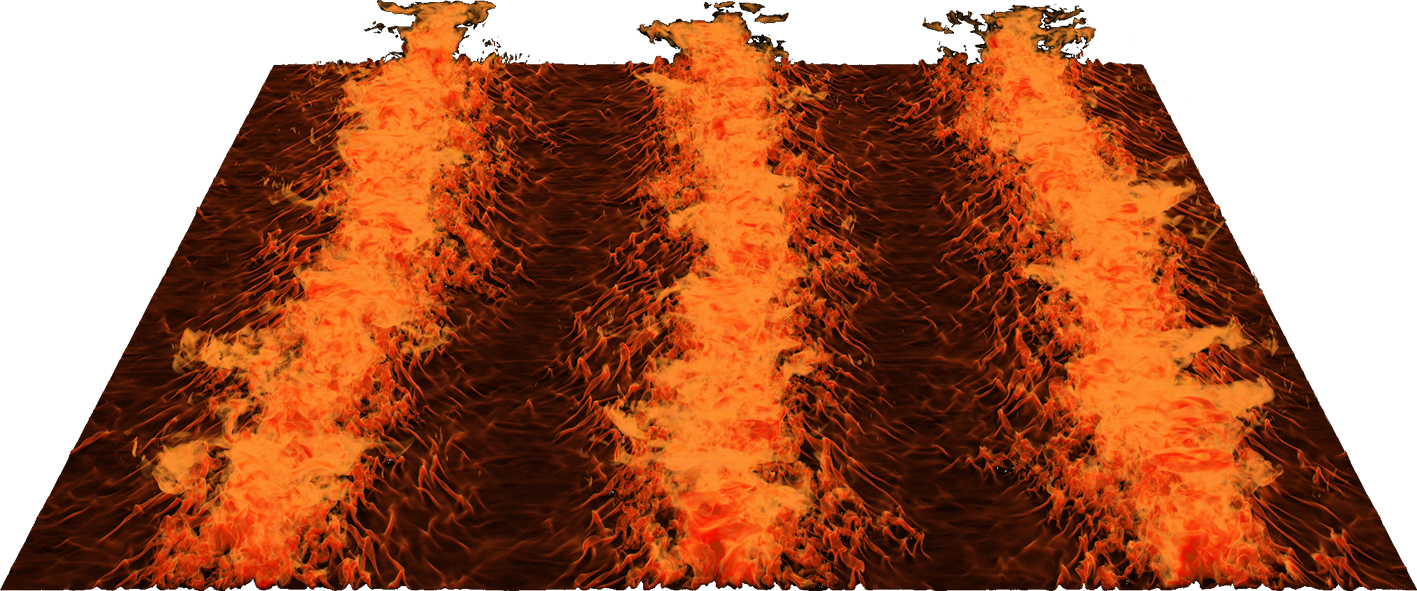Sheared thermal convection
Nature and technology have plenty of examples in which heat transport is mediated by the motion of a fluid. When the latter is the result only of the thermal induced buoyancy, we refer to as natural convection. On the other hand, if the flow features are essentially independent of the heat transfer the phenomenon is called forced convection. Most of the relevant cases occurring in reality, however, fall in between the two categories since the mean flow is forced externally but the heat transfer affects its features: these phenomena are referred to as mixed convection. The dynamics of atmosphere and oceans but also building ventilation or industrial cooling is most of the times in the regime of mixed convection which is the most difficult to characterize.
In this context, the current practice in engineering is to rely on heat transfer and skin friction predictions for natural and forced convection and to 'blend' them through the Richardson number, which is a non-dimensional parameter that weights the relative importance of buoyancy and friction. Unfortunately, owing to the strong nonlinear nature of the equations, the interaction of the two effects can generate dynamics and structures that are found in none of the two regimes (figure 1). This is certainly the case of elongated streets of clouds, patterns in sand dunes and rows of unburned trees in forest fires. Understanding in detail the heat transfer and flow dynamics in mixed convection would therefore be important either to assess the reliability of the empirical correlations and to give insights for more accurate wall models on which the simulations of real systems rely.

Figure 1: Volume rendering of the thermal structures rising from the heated plate in a simulation of sheared thermal convection.
References
-
A. Blass, S. Pirozzoli, R. Verzicco
Shear/Buoyancy Interaction in Wall Bounded Turbulent Flows,
In: Progress in Turbulence VIII, pp. 47-54. Springer International Publishing (2019) -
A. Blass, X. Zhu, R. Verzicco, D. Lohse, R. Stevens
Flow organization and heat transfer in turbulent wall sheared thermal convection,
Journal of Fluid Mechanics 897, A22 (2020) -
A. Blass, P. Tabak, R. Verzicco, R. Stevens, D. Lohse
The effect of Prandtl number on turbulent sheared thermal convection,
Journal of Fluid Mechanics (Under review)